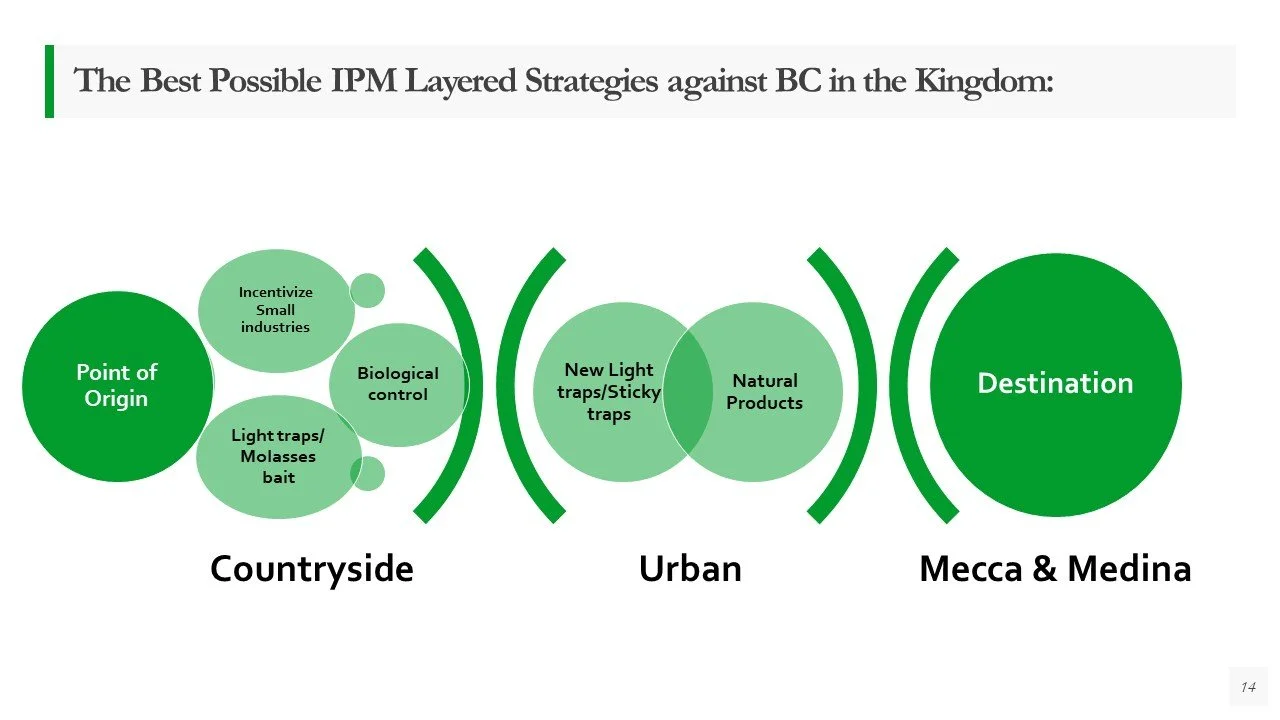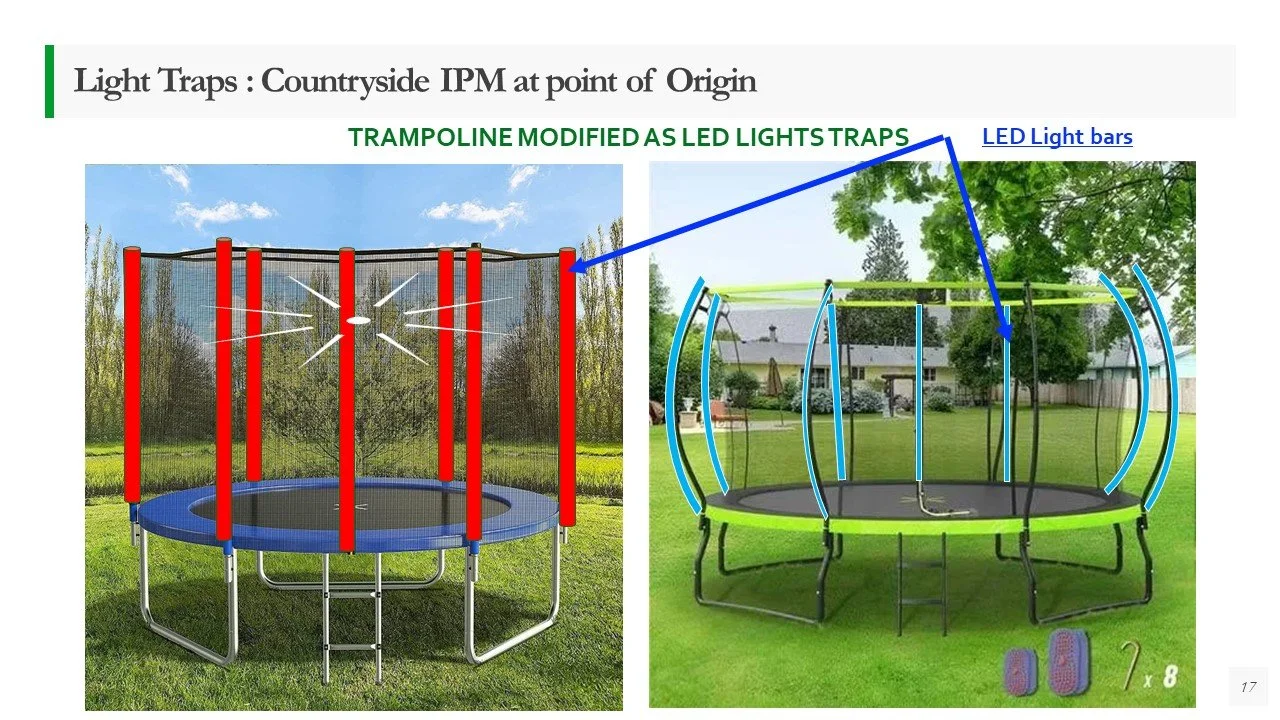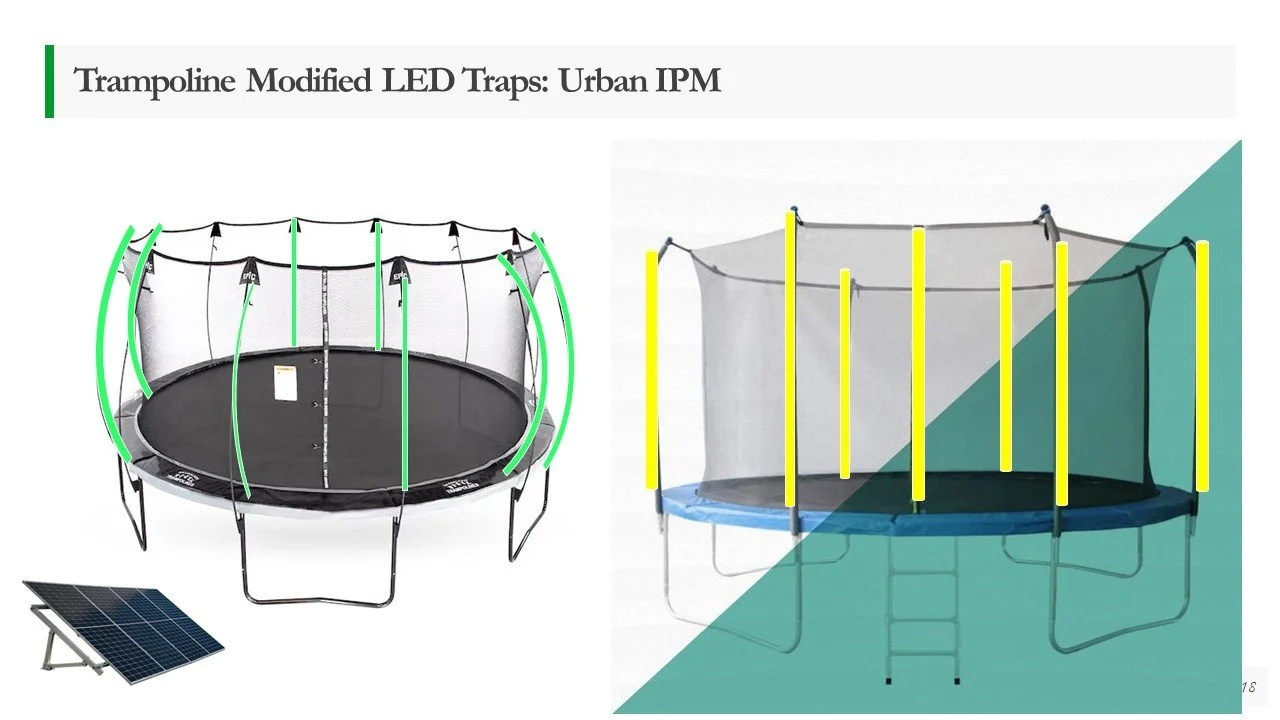Management of Black Cricket (Gryllus bimaculatus) in the changing climate. Do we have any answers?
Junaid U. Rehman1, Anam Asghar1,2 & Aneela Usman1
1MURI Innovations, USA; jur@muriinnovations.com; www.muriinnovations.com
2 Instrumental Analytical Chemistry, Faculty of Chemistry, University of Duisburg-Essen, Universitätsstr. 5, Essen, Germany. anam.asghar@uni-due.de
Disclaimer: My talk reflects my personal thinking, and no way reflects my institution National Center for Natural Products Research, The University of Mississippi.
Outbreak of Gryllus bimaculatus is a natural phenomenon that may be triggered by many biotic & abiotic factors. Climate change is the most misunderstood phenomena that is shifting the insect pests’ behavior that minor pests are becoming major & major becoming minor. Insects can remarkably adapt to changing climate in a short time. This behavior can cause massive qualitative & quantitative losses to non-targeted crops & urban sector. The reproductive capacity of Black Cricket is high at around 26-28°C & nil at around 37°C. The peak catches in the light-traps can be during early mid-summer or autumn. Pesticides applications present a solution but at the cost of contaminating the ecosystem & risks to pilgrims. Most importantly the sand particles laced with pesticide residues drifting with the high winds pose risks to kids & people in the vicinity & thus no residual control. IPM is another way to mitigate the risks associated with the pesticides & manage the pests effectively. Designing an IPM model is influenced by many factors, but mainly climate change, the local resources & behavior of the pest in that region. We will navigate a few thoughtful ideas for the IPM of Black Cricket in the domain of climate change. The outbreak of this insect is highly predictable, dry springs & dry summers are the out-break indicators. To mitigate the population of the Black Cricket at the point of origin can be effective using “IPM Layered Strategies”, a term conceived by us. Once the Black Cricket population is kept under threshold level then, “Hybrid IPM” can be employed to monitor the population. Indigenous Natural Products present the eco-friendly alternatives to chemicals for the holy places (Makkah & Madinah) where traffic of people is very high. NPs won’t leave any toxic residues for the pilgrims as against the chemical pesticides.
Black crickets ‘BC’ Gryllus bimaculatus (Orthoptera: Gryllidae) are commonly known as field crickets. They are nocturnal, omnivorous, feeding on plants, young crop seedlings, fruits, vegetables, seed grains, stored tubers, decaying organic matters, pastures, & being omnivorous they have adapted to a wide range of habitats. Their outbreaks are one of the most predictable pest events of the year in some areas. They create a nuisance because of their chirping. Each female can lay 150- 400 eggs preferably into the firm, bare soil sites [1-4]. Two outbreaks in the past five years in the Kingdom of Saudi Arabia ‘KSA’ created nuisance for the pilgrims & worshippers at the two holy places Makkah & Medina. WEQAA Center, KSA, under the leadership of Dr. Muhammad Khureiji organized a conference on awareness & control of BC in May 2024, Jeddah. The conference focused on understanding BC’s behavior & IPM. The workshop was very diverse & helped gain insight into the insect, scale of the problem, geography & limitations. We designed two tailored IPM models after performing Pest Risk Analysis (PRA) & SWOT of BC. The key ideal environment for BC is hot, dry, & humid areas & adaptation to diversity of the foods. Due to climate change, the temperature of the globe is rising, global average precipitation can increase by 7% for each degree of warming which means more rainfall. As a rule of thumb with a 2°C temperature increase heavy rains events are expected to become 1.7 times more likely & 14% more intense [5]. This reflects more of tropical climate.
We built our analysis on two questions; how the climate of Kingdom will be in 2050 & how BC will respond to it? The population of the Kingdom is expected to touch 48 million by 2050 [6]. That means, more food is needed for the population, but kingdom can witness an 88% agricultural drought by 2050 [7]. The major concerns are the flash floods in arid soils. One recently occurred in the first week of May 2024 [8,9]. That means we will observe dry, hot, & humid with heavy rainfalls, an ideal environment for BC. Based on the geography of the Kingdom, the population of BC can be mitigated in two phases, IPM Layered Strategies ‘IPM-LS’ in the 1st & Hybrid IPM in the 2nd. PRA revealed four major key points, that high rainfall favors fungal disease & thus killings eggs, humid environment helps nymphs to thrive, dry springs & summer results in outbreak of the BC, as the weather turning hot & humid, we may see multiple generations & outbreaks. In SWOT analysis, weak points were identified in the life cycle e.g., it takes 2-3 months to reach the adult stage which is plenty of time to monitor & population control. Based on findings of PRA & SWOT, we designed IPM models at point of origin to destination of the BC (Fig. 1). It’s called IPM Layered Strategies, that involves placement of multiple components of IPM at the countryside & urban dwellings thus preventing the outbreaks & mitigating risk of BC before reaching to holy places Makkah & Medina. Breeding sites are about 100 km away from the destination. One of the components is the biocontrol (mycoinsecticides) like Metarhizium anisopilae 3 at the points of origin. Why do we think biocontrol can be effective against BC? Well, as per climate projection, humidity will increase, & it’s the most suitable climate for entomopathogenic fungi to thrive. Green initiative of Crown Prince MBS 2030 vision to fight climate change is a great initiative, that will not only mitigate risks of climate change but also trap rain waters, prevent flash flooding & suitable environment for bio-control agents.
As BC is highly receptive to light, light traps can get good catches to mitigate the population. Unlike conventional small monitoring light traps, we designed solar panel based big light traps that can be installed at the points of origin (desert areas) every 500m, depending on the population survey & mapping. For that we modified trampolines into light traps, where LED lights can be fixed along vertical poles & enclosure net will serve as boundary (Fig. 2 & 3). The catch pan can be installed at the bottom if needed. These light traps can serve dual purpose; catch & catch-release concept. The latter can lace BC with bio control agents like (M. anisopilae) that will be carried to grounds/hideouts, thus infecting the rest of the population & increasing fungal saturation at the breeding sites. With this method, we may expect a gradual decrease in population over a short period of time. In the urban areas, natural products-based control measures can be deployed along with the light traps.
In urban management, schemes to incentivize the BC catches can be launched, two chicken/household can help mitigating the insect population & incentive of their eggs can facilitate nutrition coverage of the household as well. The similar model to uplift poverty in Pakistan (5 chickens & 1 rooster/household to several million poor families) has proven very effective & reducing household organic waste as well. The model was launched by Prime Minister Imran Khan & Dr. Sania Nishtar in 2018. It can be tailored for the Kingdom & will serve multiple purposes beside nutritional coverage. Firstly, chicken will feed on the daily household food/organic waste, thus reducing load on the waste management & landfills. Secondly, these birds will feed on the nymphs of BC in the hideouts. Beside this, small industries can be incentivized to turn BC to poultry & fish feed which is in high demands in Pacific & South American region or can serve for local industries.
To establish the IPM Layered Strategies model, following steps were recommended; establish BC monitoring cell, quadcopter-based monitoring surveys & mapping, install trampoline modified light traps in the mapped areas, involve pesticide industry to source bio-control agents like Metarhizium, incentivize BC catches for cash, create buffer zones closer to the border of breeding sites & urban areas, animal wing of WEQAA can launch 2 chicken/household program for urban areas to create a buffer zone, initiate collaborative projects to identify indigenous bio-control agents/entomopathogenic fungi & soil borne isolates (entomopathogenic nematodes), & natural products for BC management in the Makkah & Medina. Once we have mapped the breeding sites, control measures in place, buffer zones created, then the 2nd phase, i.e. “Hybrid IPM” (AI “Artificial Intelligence” for monitoring + IPM to mitigate the population) can be placed.
This talk was presented at the International Workshop on Integrated Management for reducing the Outbreak of Black Cricket, Gryllus bimaculatus, organized by WEQAA Center, KSA, in Jeddah (May 2024). @weqaacenter (X, YouTube, Insta, LinkedIn)
1: Merchant, M. (2003). Cricket control in the Fall. House and Garden Series. Texas Agricultural Extension Service, House & Landscape Pest Series. https://citybugs.tamu.edu/factsheets/household/misc-house/ent-2003/
2: Milner, R. & Rowland, M. (1998). Efficacy of Metarhizium anisopliae for control of black field crickets, Teleogryllus commodus Walker (Orthoptera: Gryllidae) in Pastures. J. Orthopt. Res., 7: 125-128.
3: Mahar, AN, Jan, ND, Mahar, AQ and Gowen, SR. (2012). Biocontrol of black cricket, Gryllus bimaculatus (Orthoptera: Gryllidae) nymphs with entomopathogenic nematodes. Pak. J. Nematol., 30 (1): 27-40.
4: Ogg, B. (2015). Crickets. https://lancaster.unl.edu/pest/resources/cricket.shtml
5: Predictions of Future Global Climate. https://scied.ucar.edu/learning-zone/climate-change-impacts/predictions-future-global-climate
6: https://worldpopulationreview.com/
7: Wehrey, F et al. (2023). Climate Change and Vulnerability in the Middle East. https://carnegieendowment.org/posts/2023/07/climate-change-and-vulnerability-in-the-middle-east?lang=en
9: https://www.barrons.com/news/heavy-rains-flood-roads-in-saudi-arabia-s-riyadh-0eff719c
Fig. 1: IPM Layered Strategies
Fig. 2: Trampoline modified into Light traps (Concept)
Fig. 3: Trampoline modified into Solar powered Light traps
WEQAA workshop attendees group photo, Jeddah, KSA







